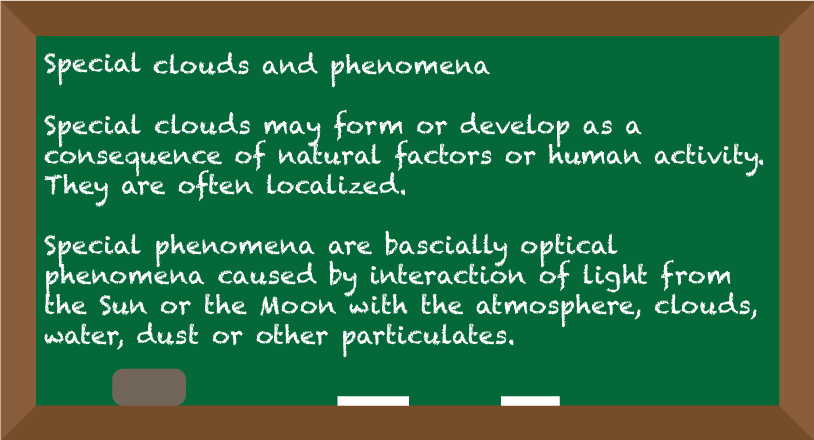Special Clouds and Phenomena

Anti-crepuscular rays are most frequently visible near sunrise or sunset (see also crepuscular rays). When the light rays from the Sun are coming from low angle, the rays will pass through gaps in the clouds and travel straight to the other side. Anti-crepuscular rays are seen in the direction opposite the Sun. From the view of a ground observer, the light appears as if the sunrise glows are from the west while the sunset glows are from the east.
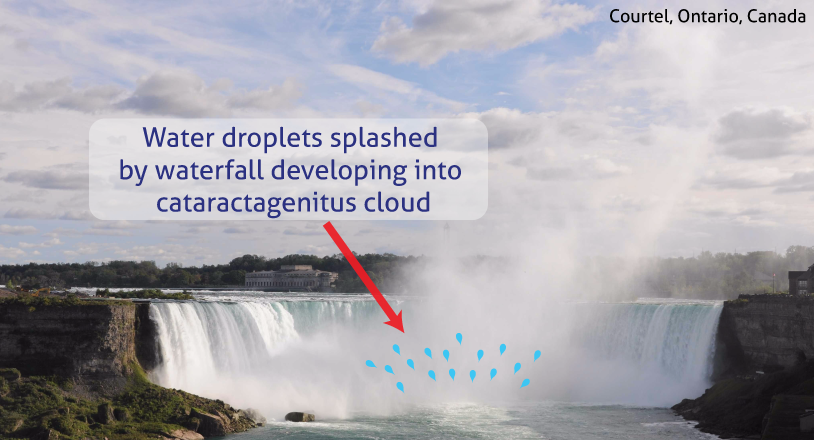
Cataractagenitus is a new genitus included in the 2017 updated edition of the International Cloud Atlas of the World Meteorological Organization.
Cataractagenitus describes clouds which develop near large waterfalls as a consequence of water broken up into spray by the falls. Examples include cumulus cataractagenitus, stratus cataractagenitus, etc.

Corona forms when a natural light source, such as sunlight or moonlight, is diffracted by small water droplets or ice particles in thin clouds (such as altocumulus or cirrocumulus), mist or fog. Corona has the appearance of one or more sequences of coloured rings centred on the Sun or the Moon with a bluish-white disk fading to reddish-brown towards the edge.。
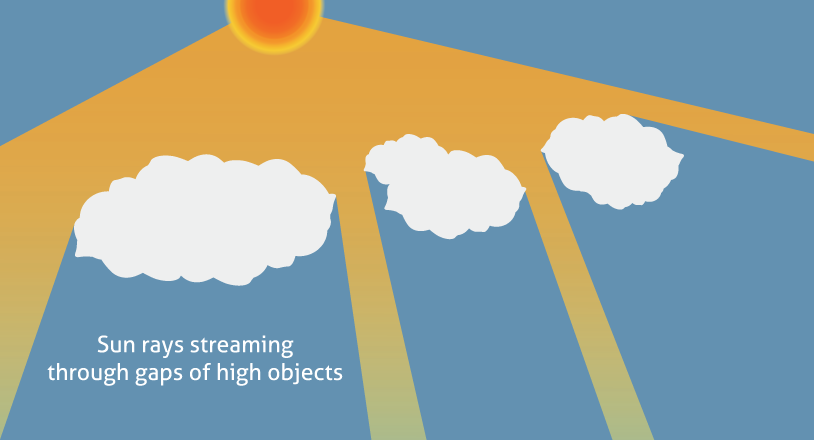
Crepuscular rays are columns of sunlit air separated by darker cloud-shadowed regions as light rays pass through gaps of high objects like mature cumulonimbus or mountains. They appear more often on cloudy days.
Crepuscular rays can appear with different positions of the Sun in the sky, and twilight specifically refers to the phenomenon during sunrise or sunset. The coastal areas and valleys with relatively high humidity are good places to observe crepuscular rays. It is because the dust particles and water vapour in air can reflect sunlight and hence be able to “highlight” the rays of sunlight. Crepuscular ray is also commonly called “Jesus Light”.
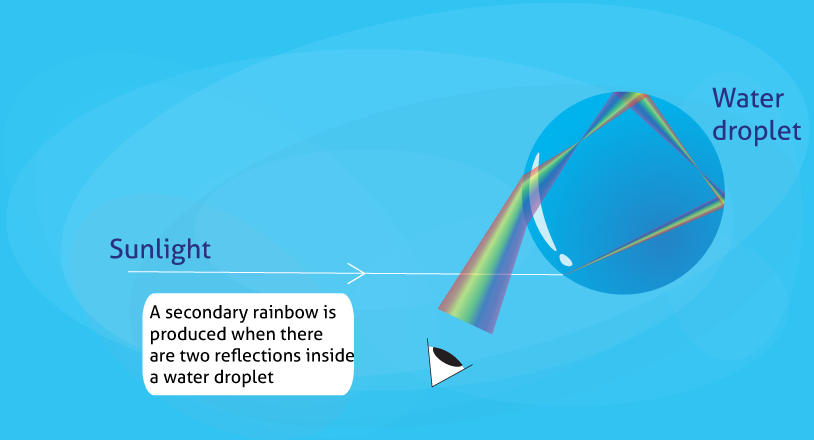
When sunlight passes through a water droplet, it gets refracted, reflected and then refracted again. The rainbow which we normally see (i.e. primary rainbow) is the result from one reflection inside a droplet. A secondary rainbow is produced when there are two reflections inside a droplet. The colour sequence of a secondary rainbow is reversed when compared with a primary rainbow, i.e. blue on the outside, red on the inside. It is also less bright in the secondary rainbow because some energy of the light will be lost at each reflection.
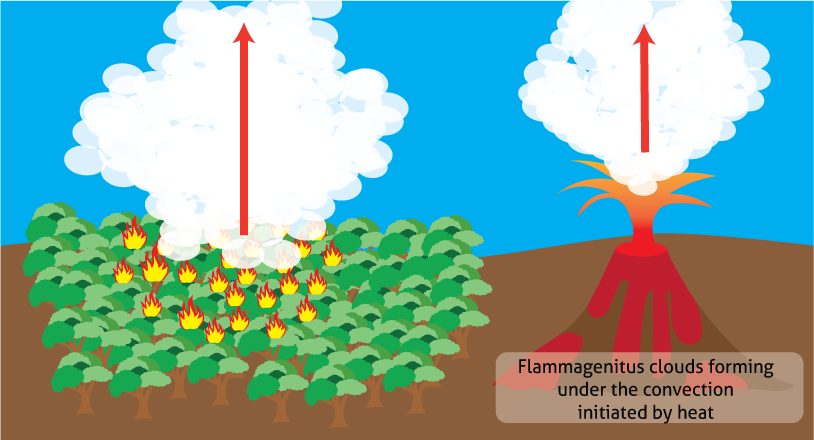
Flammagenitus is a new genitus included in the 2017 updated edition of the International Cloud Atlas of the World Meteorological Organization.
Flammagenitus describes clouds which develop due to convection initiated by heat from forest fires or volcanic eruptions. Examples include cumulus congestus flammagenitus, cumulonimbus calvus flammagenitus, etc.
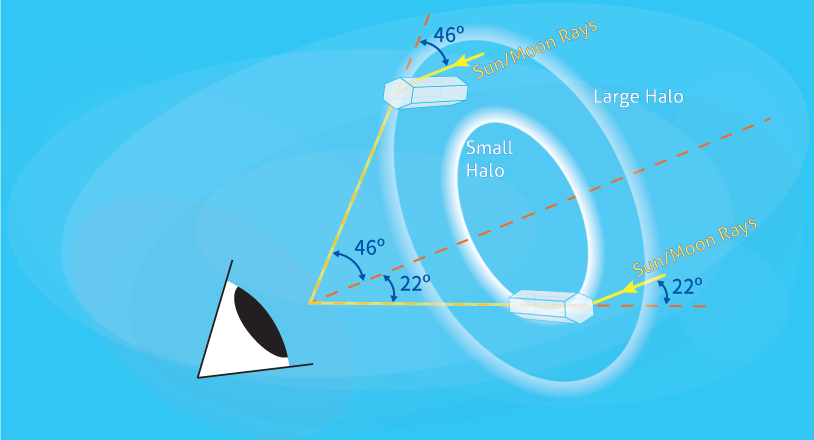
Halo is an optical phenomenon. When the sunlight or moonlight shines through a layer of cirriform clouds that are composed of ice, the light will be refracted to form a ring or an arc around the Sun or the Moon. The halo will be brighter and easily observed if the cloud layer contains a larger number of ice crystals; otherwise, it will be difficult to observe or even the halo cannot be formed.
Halo can be classified into "small halo" (22 degrees halo) or “large halo” (46 degrees halo). Small halo has an angular radius of 22 degrees. It has a pale red inner ring, and occasionally purple or white aura outer ring. The sky inside the ring is dimmer than that outside the ring. The big halo has an angular radius of 46 degrees. It is less common, and is generally dimmer than the small halo.

Homogenitus is a new genitus included in the 2017 updated edition of the International Cloud Atlas of the World Meteorological Organization.
Homogenitus describes clouds which develop due to human activity, such as aircraft contrails, distrails or cumuliform clouds generated by rising thermals above power plants. An example is cumulus mediocris homogenitus.
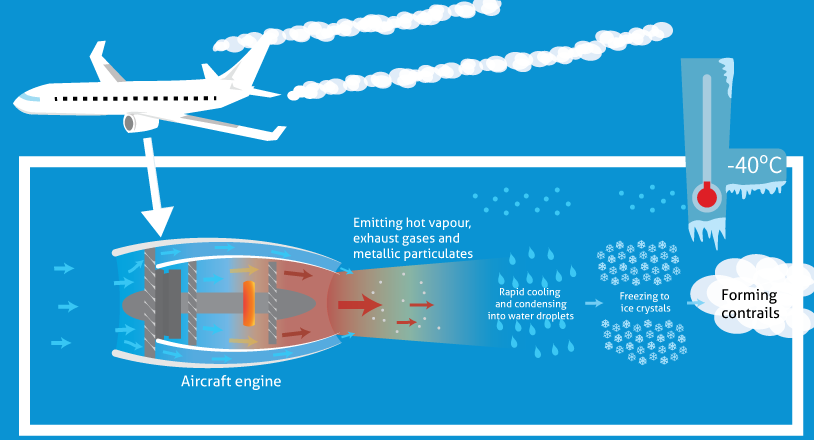
Contrails are aircraft condensation trails, a type of man-made clouds, which appear when an aircraft flies across moist and cold air. The aircraft engine will emit hot vapour, exhaust gases and metallic particulates while flying. When these hot gases encounter the surrounding cold air at cruising levels, they will condense into water droplets or ice crystals, forming line-shaped cloud like a trail.
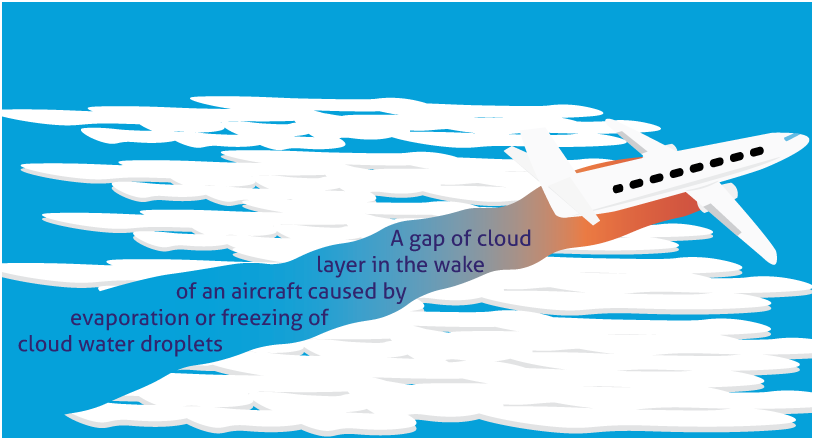
Distrails are produced by flying aircrafts. Different from contrails, distrails appear when an aircraft flies through a layer of thin and extensive clouds. The heat emitted by the aircraft engines evaporates the water droplets in the clouds, creating a gap in the cloud layer as crossed by the aircraft. Distrails may also appear when an aircraft flies through a thin layer of supercooled medium to high level clouds like altocumulus. The supercooled water droplets in the clouds may freeze due to the disturbing airflow created by the aircraft, leaving a clear stream in its wake.
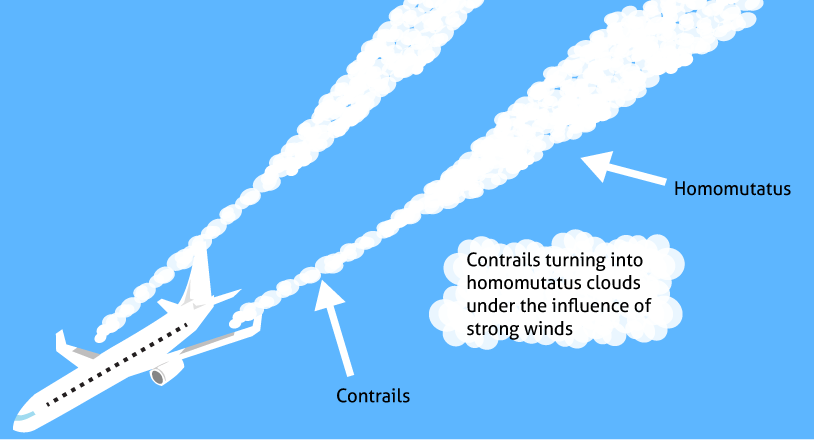
Homomutatus is a new mutatus included in the 2017 updated edition of the International Cloud Atlas of the World Meteorological Organization.
Homomutatus describes persistent contrails which spread out over a period of time under the influence of strong upper level winds, undergo internal transformation and eventually take on the appearance of more natural cirri-form clouds. Examples include cirrus floccus homomutatus, cirrus fibratus homomutatus, etc.
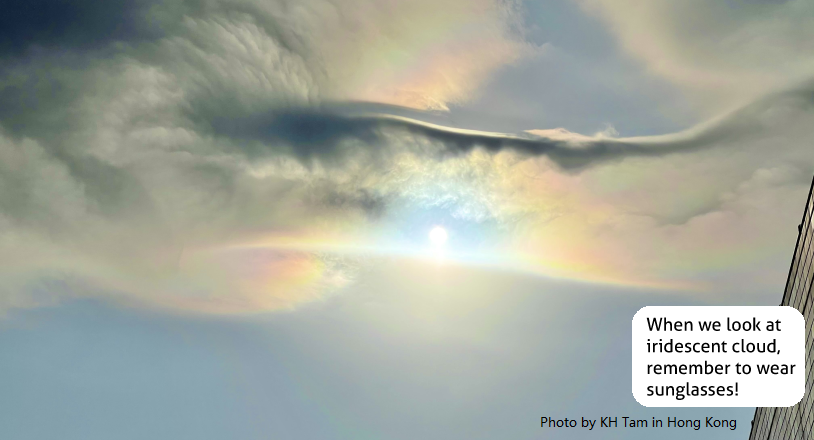
Cloud with rainbow colours is called "iridescent cloud". It is a special optical phenomenon and its formation mechanism is the same as that for corona. It is usually observed in altostratus or altocumulus clouds near the Sun when sunlight diffracts through tiny water droplets or ice crystals of fairly uniform size in clouds. When diffraction of light occurs in a larger extent of cloud layer, corona may appear.
As iridescent cloud often appears near the Sun, one should avoid direct sunlight in order to protect the eyes. It will also be easier to identify iridescent cloud.
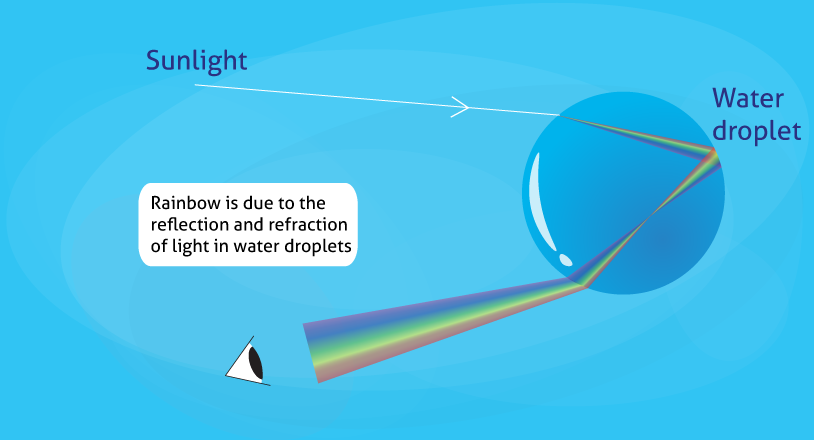
Sunlight is made up of light of different wavelengths (or simply different colours). When there are water droplets in the atmosphere, for instance when it is raining, sunlight will be refracted (i.e. changing its direction of propagation), reflected and then refracted again inside the droplets. The rainbow we normally see is the result from one reflection inside a droplet. Blue light has shorter wavelength and is refracted more than light with longer wavelength such as red light. Hence, blue light is located in the inner band of a rainbow while red light is at the outer band.

Silvagenitus is a new genitus included in the 2017 updated edition of the International Cloud Atlas of the World Meteorological Organization.
Silvagenitus describes clouds which develop over forests as a result of increased humidity due to evaporation and evapotranspiration from the tree canopy. An example is stratus silvagenitus.
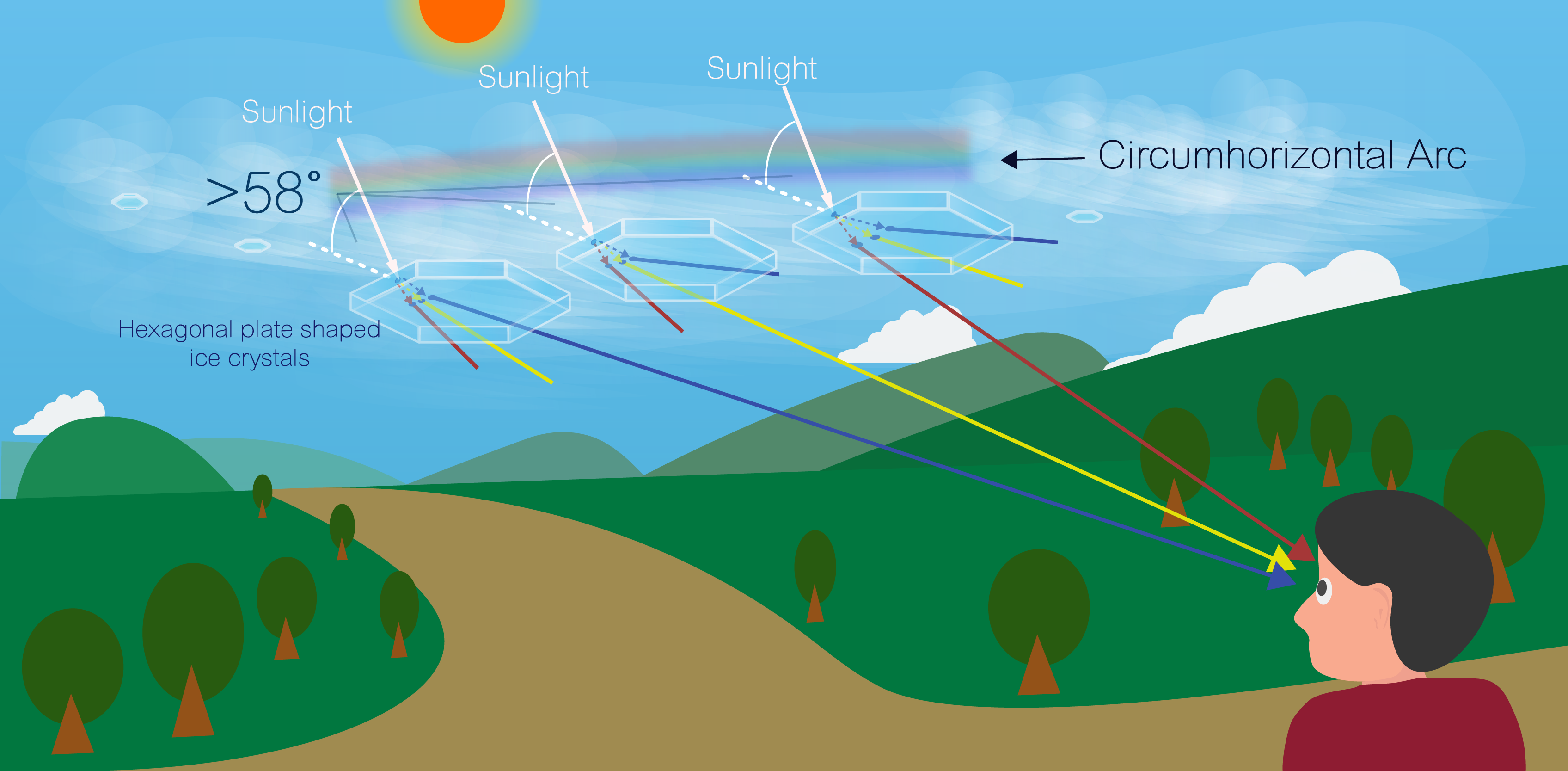
“Circumhorizontal Arc” belongs to the family of halo optical phenomena and occurs less frequently than the “22 degrees halo”. When hexagonal plate shaped ice crystals inside cirrus clouds suspend horizontally in the upper sky, sunlight entering from the vertical side face of the crystals with an incident angle of greater than 58° will be refracted to its horizontal bottom face, with different colours of the light produced by different degrees of refraction. “Circumhorizontal Arc” appears beneath the Sun and near the horizon, extending horizontally with red colour on top and violet at the bottom. The colour sequence is the same as that of a primary rainbow.
As the incident angle of sunlight greater than 58° is one of the necessary conditions of its formation, “Circumhorizontal Arc” may only appear near noon time. Besides, the phenomenon cannot be seen in places at high latitude of 55° or more (for example, some countries in northern Europe) because the elevation angle of the Sun is always lower than 58°.
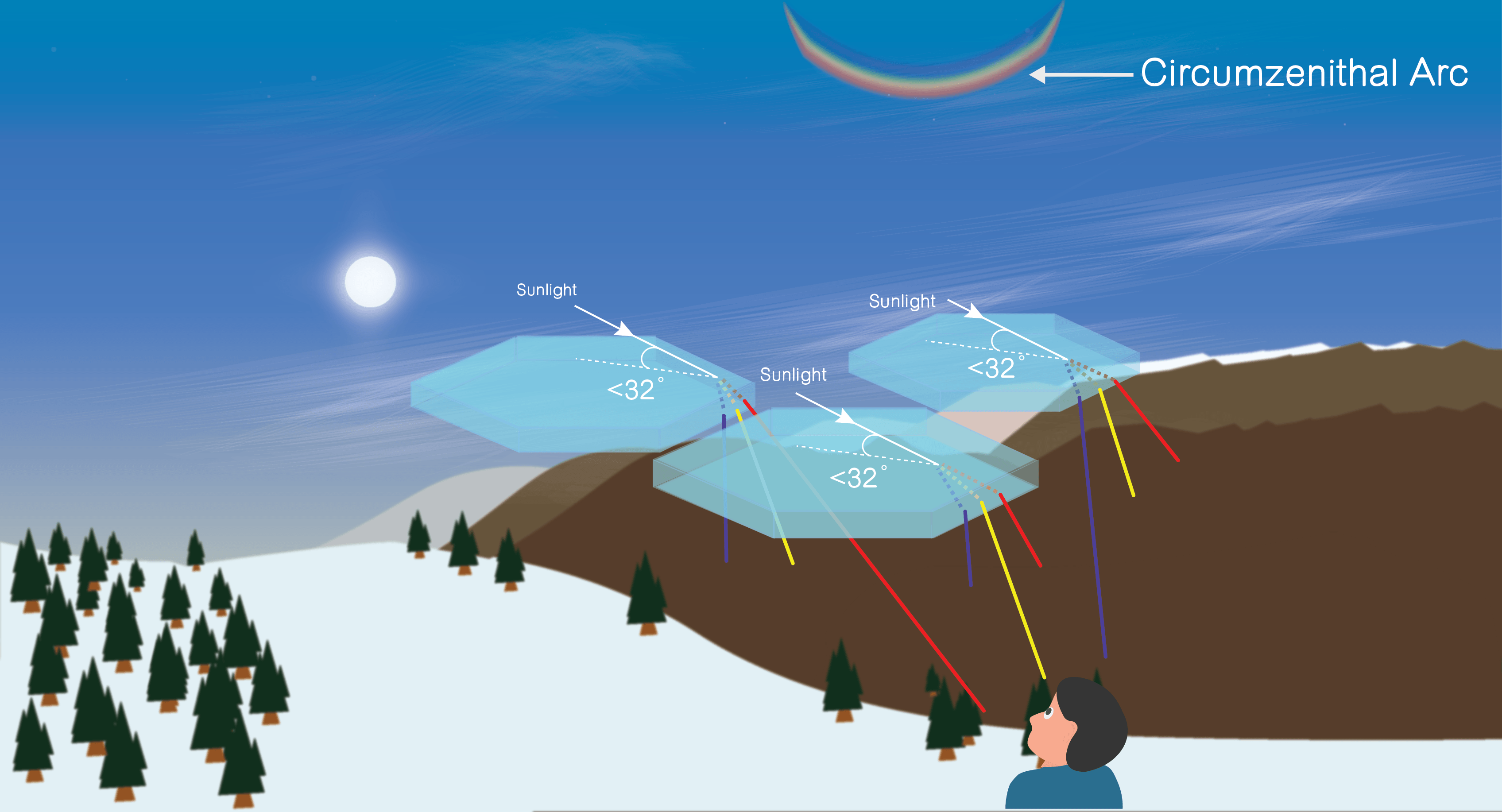
“Circumzenithal Arc” belongs to the family of halo optical phenomena. It originates from refraction of sunlight by hexagonal plate shaped ice crystals suspending horizontally inside cirrus clouds, similar to the formation of “Circumhorizontal Arc”. However, it occurs only when sunlight enters from the horizontal top face of ice crystals with an incident angle of less than 32°and emerges from the vertical side face, with different colours of the light produced by different degrees of refraction. If the incident angle of sunlight is greater than 32°, the light ray will first undergo internal reflection inside the crystal and then refracted to the bottom face in the opposite direction. Different colours of the light will then converge and produce the single-coloured (white) “Parhelic Circle”.
The difference between “Circumzenithal Arc” and “Circumhorizontal Arc” is that the former is located above the Sun, with an arc-shaped surrounding the zenith. It has violet colour on top (inside) and red at the bottom (outside) of the arc. The colour sequence is opposite to that of the “Circumhorizontal Arc”, and it looks like an upside-down rainbow.
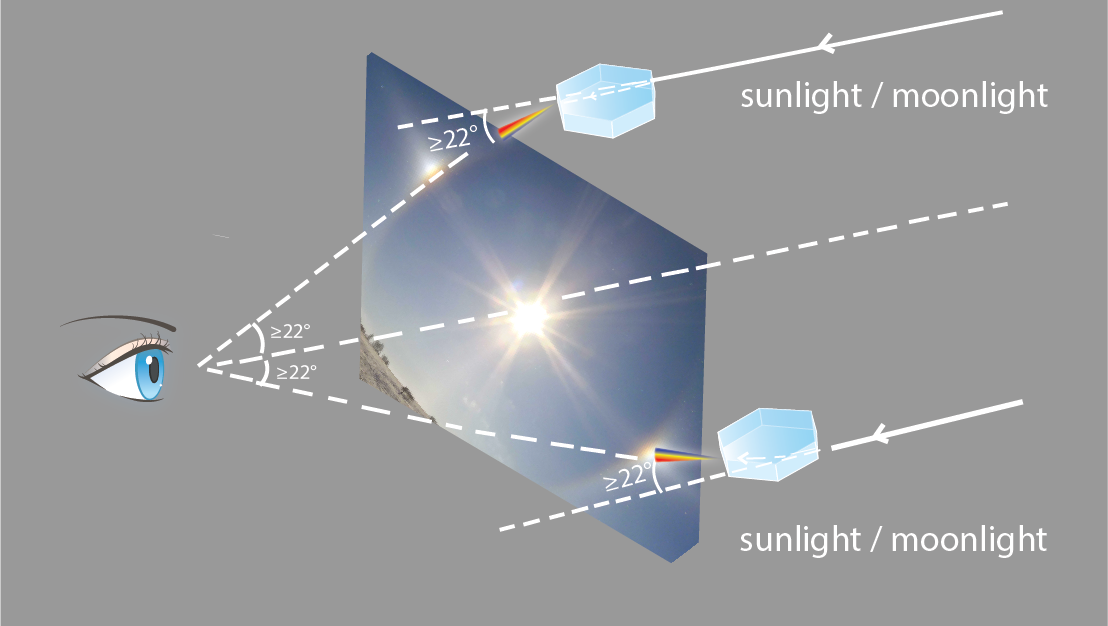
Sundogs/Moondogs are produced by twice refraction of the Sun/Moon’s light rays through the side face of hexagonal plate shaped ice crystals of cirrus clouds. They are luminous or bright spots appearing at approximately 22 degrees or more to the right and left of the Sun/Moon at the same altitude in the sky. They are most easily seen when the Sun/Moon is close to the horizon with a low elevation angle.
Sundogs/Moondogs have a short whitish horizontal luminous band or tail extending outward. Their colour appears slightly reddish on the side towards the Sun/Moon, and slightly bluish away from it. It is because red light deviates from the incident white light less than blue light after refracting through the hexagonal ice crystal.
